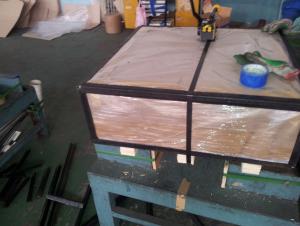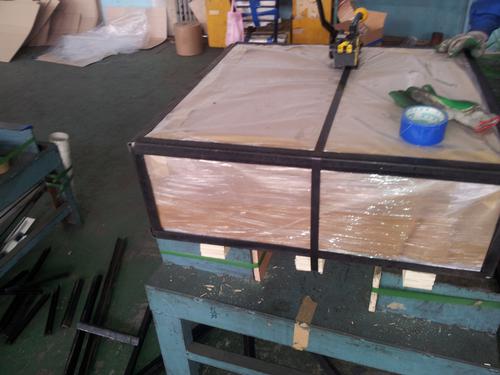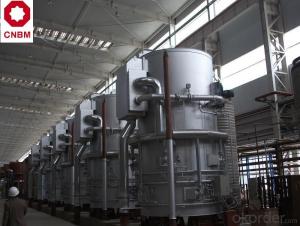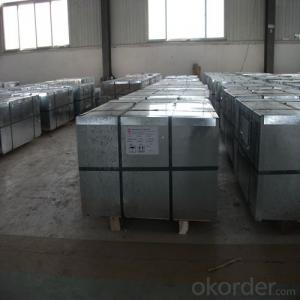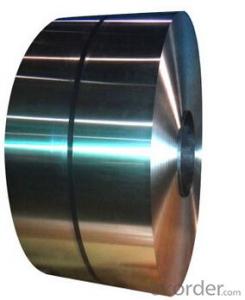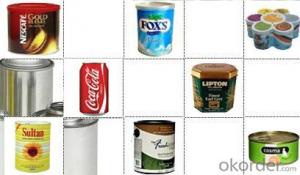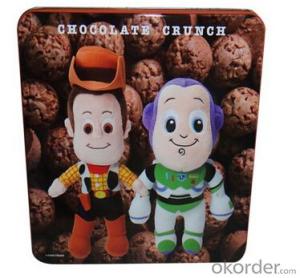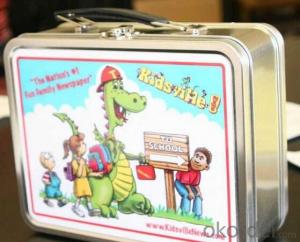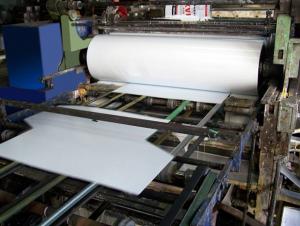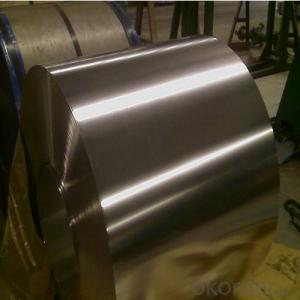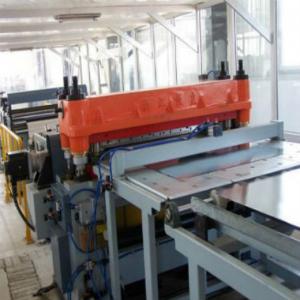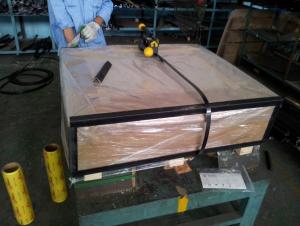Tinplate For Metal Can
- Loading Port:
- China Main Port
- Payment Terms:
- TT OR LC
- Min Order Qty:
- -
- Supply Capability:
- -
OKorder Service Pledge
Quality Product, Order Online Tracking, Timely Delivery
OKorder Financial Service
Credit Rating, Credit Services, Credit Purchasing
You Might Also Like
Our Tinplates Specification is as below:
Standard: ISO 11949 -1995, JIS G3303,ASTM A623, BS EN 10202
Material: MR,SPCC
Thickness:0.15mm - 0.50mm
Width and Length: 600mm -1150mm
Temper: T1-T5
Annealing: BA & CA
Tincoating:customized
- Q: What are the main safety regulations for tinplate production and use?
- The main safety regulations for tinplate production and use include ensuring proper ventilation and exhaust systems to prevent exposure to harmful fumes, implementing effective fire prevention and control measures, providing personal protective equipment for workers such as gloves and goggles, conducting regular maintenance and inspection of equipment to prevent accidents, and adhering to strict quality control standards to ensure the safety of the final product. Additionally, proper training and education about safety protocols should be provided to all employees to minimize risks and ensure a safe working environment.
- Q: Can tinplate packaging be used for chemical products?
- Yes, tinplate packaging can be used for chemical products. Tinplate is a durable and resistant material that can effectively protect chemical products from external factors such as corrosion, light, and moisture. It is commonly used in the packaging of various chemical products, including paints, solvents, and adhesives.
- Q: How does tinplate handle exposure to gases and odors?
- Tinplate is highly resistant to gases and odors, making it an excellent material for packaging and storing sensitive products. It forms a protective barrier that prevents any unwanted smells or gases from penetrating the container, ensuring the integrity and quality of the contents inside.
- Q: What are the advantages of using tinplate for shipping containers?
- There are several advantages of using tinplate for shipping containers. Firstly, tinplate is highly durable and provides excellent protection against corrosion, ensuring the safety and integrity of the goods being transported. Secondly, tinplate is lightweight yet strong, making it easier to handle and transport containers efficiently. Additionally, tinplate is easily recyclable, making it an environmentally friendly choice. Lastly, tinplate has a smooth surface which can be easily cleaned and sanitized, reducing the risk of contamination during shipping.
- Q: Can tinplate be soldered?
- Yes, tinplate can be soldered. Tinplate is a steel sheet coated with a layer of tin, which makes it suitable for soldering. The tin coating provides good solderability, allowing for the joining of tinplate using soldering techniques.
- Q: How does tinplate contribute to the overall durability of packaging?
- Tinplate contributes to the overall durability of packaging by providing a strong and protective barrier against external factors such as moisture, oxygen, and light. Its corrosion-resistant properties ensure that the contents of the packaging remain fresh and intact for a longer period of time. Additionally, tinplate's strength allows for stacking and transportation without damage, ensuring the longevity of the packaging and extending the shelf life of the products inside.
- Q: Can tinplate packaging be used for frozen or refrigerated goods?
- Yes, tinplate packaging can be used for frozen or refrigerated goods. Tinplate is a durable and corrosion-resistant material that can withstand low temperatures without compromising the quality and safety of the packaged items. It provides a protective barrier against moisture, light, and oxygen, ensuring the preservation of frozen or refrigerated goods.
- Q: Can tinplate be used for gift packaging?
- Yes, tinplate can be used for gift packaging. It is a versatile material that offers durability and a premium look, making it suitable for various packaging purposes, including gift boxes and containers. Tinplate can be decorated with attractive designs and is also recyclable, making it an eco-friendly option for gift packaging.
- Q: How does tinplate affect the overall product tamper-evident features?
- Tinplate enhances the tamper-evident features of a product by providing a secure and durable packaging solution. Its unique properties, such as strength, rigidity, and resistance to corrosion, make it difficult for tampering attempts to go unnoticed. Additionally, tinplate can be easily sealed, ensuring that any unauthorized access or tampering is immediately visible to consumers.
- Q: How can the section of the tinplate be maintained without rust?
- The cross section of the tinplate is free of rust. Both sides have plating, the cross section can use lubricating oil
Send your message to us
Tinplate For Metal Can
- Loading Port:
- China Main Port
- Payment Terms:
- TT OR LC
- Min Order Qty:
- -
- Supply Capability:
- -
OKorder Service Pledge
Quality Product, Order Online Tracking, Timely Delivery
OKorder Financial Service
Credit Rating, Credit Services, Credit Purchasing
Similar products
Hot products
Hot Searches
Related keywords
